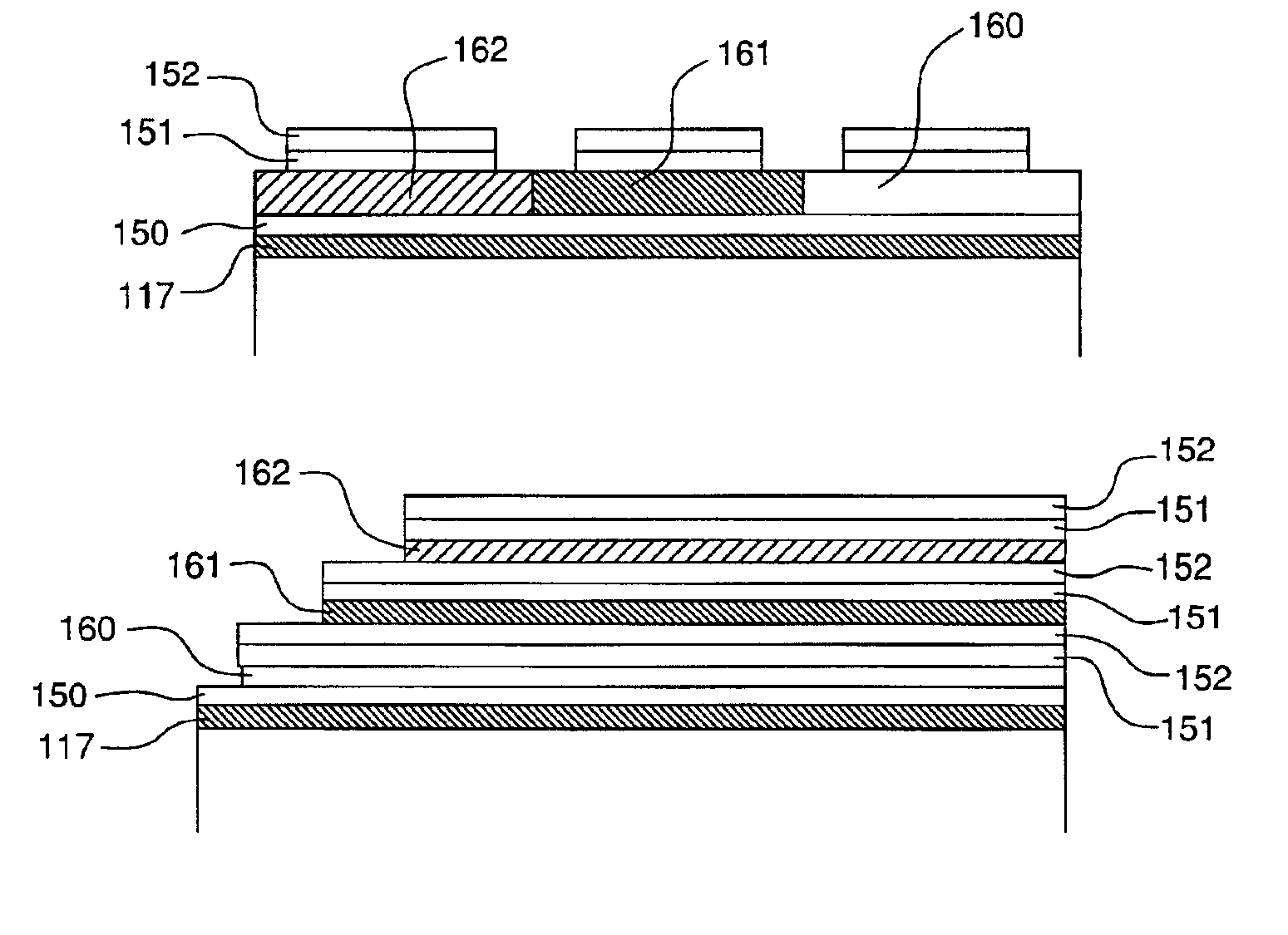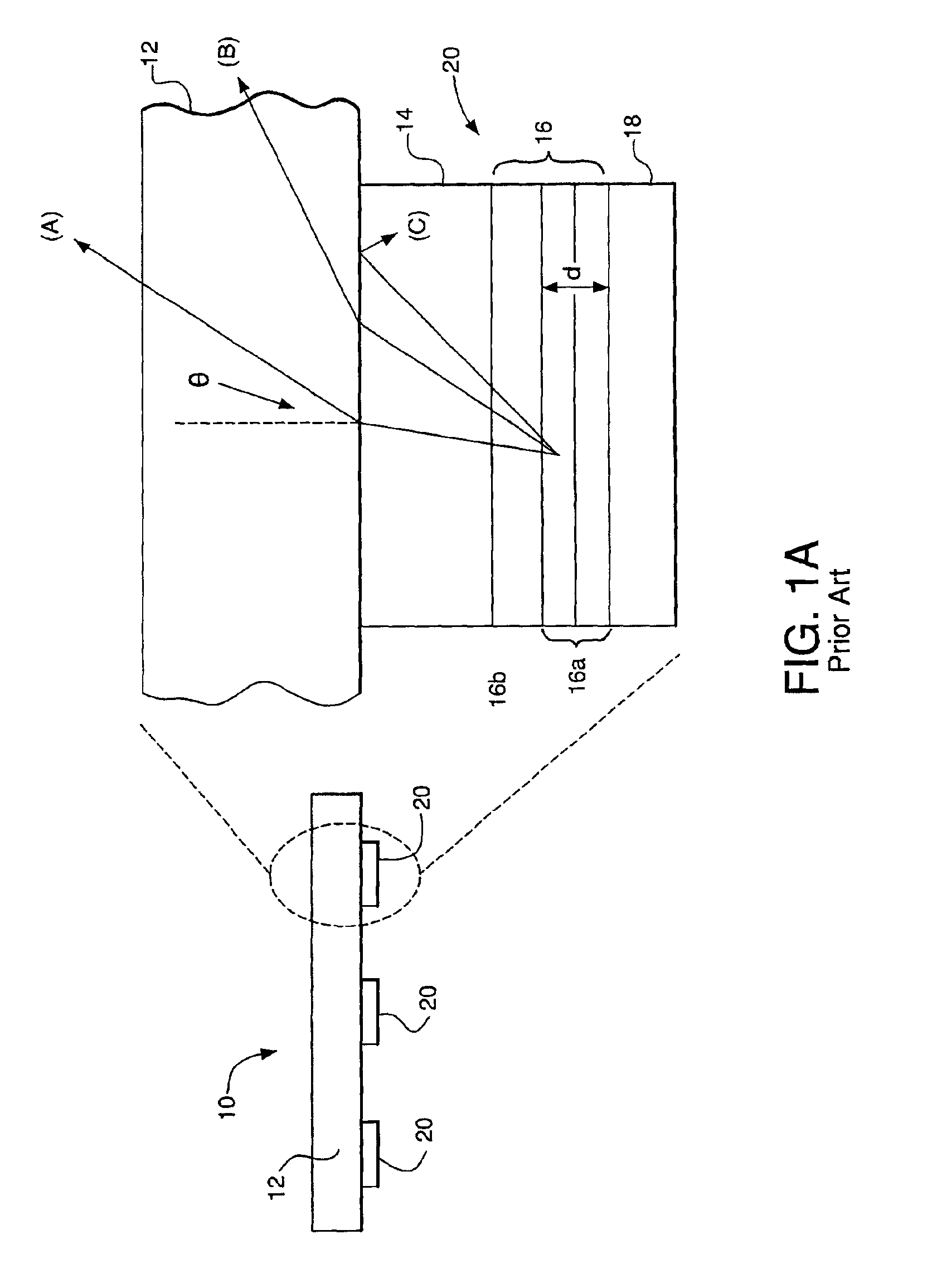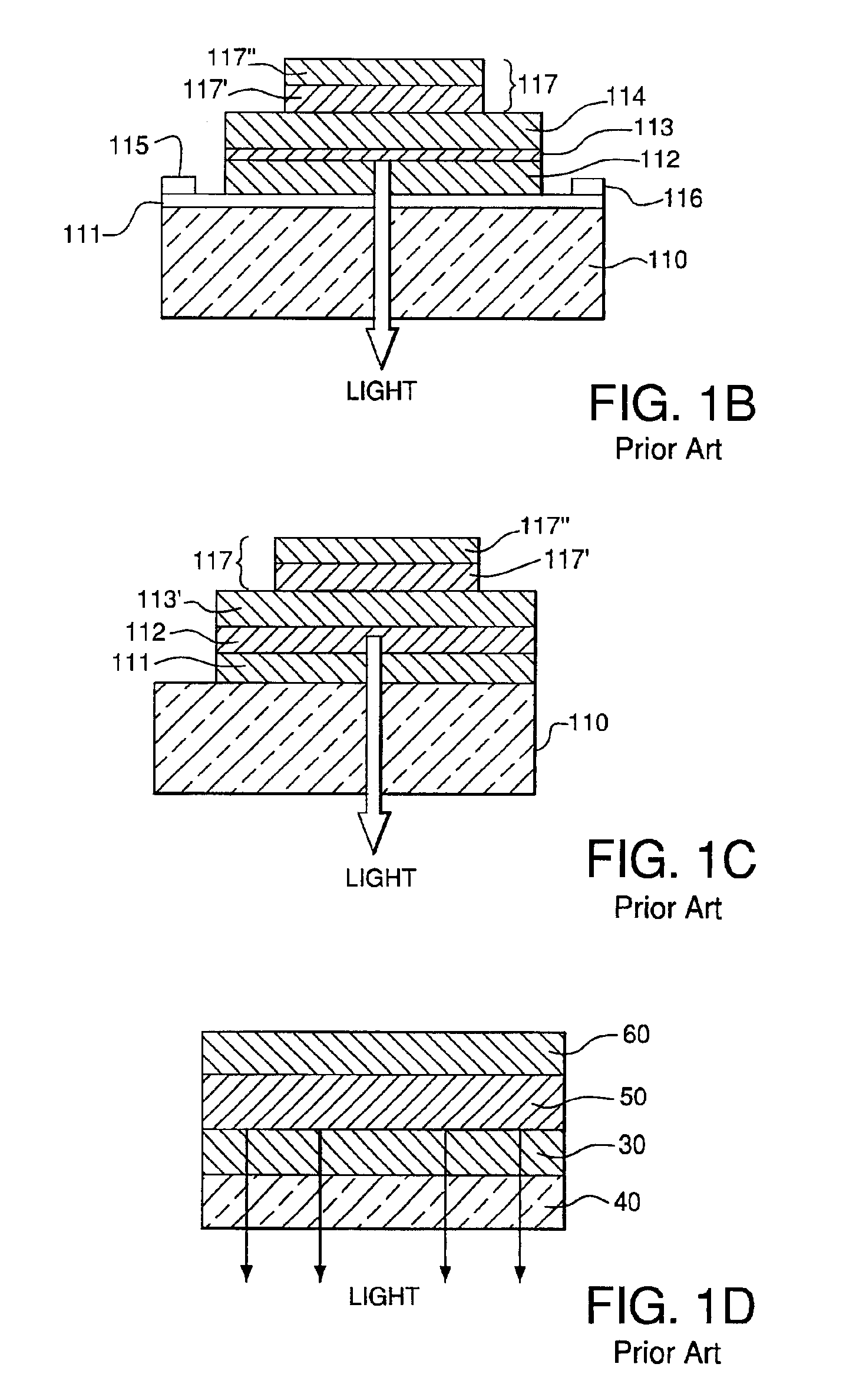Micro-lens arrays for display intensity enhancement
a micro-lens array and display technology, applied in the field of organic light emitting devices and micro-lens arrays, can solve the problems that the current liquid crystal display technology used by most flat-panel displays is limited in its ability to meet these increasing demands, and achieve the effect of enhancing the light coupling efficiency of light emitting devices
- Summary
- Abstract
- Description
- Claims
- Application Information
AI Technical Summary
Benefits of technology
Problems solved by technology
Method used
Image
Examples
Embodiment Construction
[0028]A light emitting device according to the invention can include, as shown in FIG. 2, a microlens substrate 102 and a plurality of organic light emitting devices (OLEDs) 20. Each OLED 20 can include an anode layer 14, at least one organic layer 16, and a reflecting cathode 18. The anode layer 14 is typically made of Indium Tin Oxide (ITO), and has a typical thickness, tITO, of about 150 nm and an index of refraction, nITO, of about 1.8. The organic layer 16 has a typical thickness, torg, of about 100 nm, and an index of refraction, norg, of between about 1.6 and 1.8. The cathode 18 is typically made of Mg:Ag, Li:Al, Li2O:Al, or LiF:Al. As shown, the device can include an electron transporting (ETL) and electroluminescent (EL) layer 16a of tris(8-hydroxyquinoline) aluminum (Alq3), with an index of refraction, nalq, of about 1.72. The device can include a hole transporting layer (HTL) 16b of 4, 4′-bis[N-(1-napthyl)-N-phenyl-amino] biphenyl (α-NPD), with an index of refraction, nNP...
PUM
 Login to View More
Login to View More Abstract
Description
Claims
Application Information
 Login to View More
Login to View More - R&D
- Intellectual Property
- Life Sciences
- Materials
- Tech Scout
- Unparalleled Data Quality
- Higher Quality Content
- 60% Fewer Hallucinations
Browse by: Latest US Patents, China's latest patents, Technical Efficacy Thesaurus, Application Domain, Technology Topic, Popular Technical Reports.
© 2025 PatSnap. All rights reserved.Legal|Privacy policy|Modern Slavery Act Transparency Statement|Sitemap|About US| Contact US: help@patsnap.com



